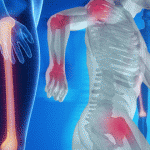NEW YORK (Reuters Health)—Elevated lipid levels are associated with an increased revision-surgery rate after arthroscopic rotator cuff repair, while statin use appears to mitigate that increase, according to a database review. “[Although] it supported our hypothesis, we found it interesting to finally demonstrate a link between hyperlipidemia and rotator cuff-repair failure resulting in revision surgery…
Search results for: rotator cuff
Similar Outcomes with Early or Late Mobilization After Rotator Cuff Repair
NEW YORK (Reuters Health)—Early or late mobilization after rotator cuff surgery appears to yield similar outcomes, according to a new meta-analysis. Dr. Bruno Fles Mazuquin from the University of Central Lancashire in the U.K., and colleagues conducted an overview of systematic reviews comparing the effectiveness of early and conservative rehabilitation after rotator cuff repair. The…

Ultrasound May Be Useful for Grading Rotator Cuff Tendinopathy
Researchers have developed procedures and assessed their efficacy for the use of ultrasound images to measure the inter-rater reliability of the measurement of structural changes in the tendon of patients with supraspinatus tendinopathy. The standardized procedures proved useful in evaluating patients…

Platelet-Rich Plasma Therapy May Treat Degenerative Tendinopathies & Pain
A recent small-scale study showed that patients who received platelet-rich plasma therapy for tendon healing experienced clinically important improvements in pain and disability compared with placebo. Additionally, MRI showed that some participants had improvement in the pathoanatomy of the rotator cuff six months after treatment…

Reproductive Health, Biosimilars & More in Focus at SOTA 2025
Reproductive health, biosimilars, IgG4-related disease and much more—five speakers give us a sneak peek into important topics being addressed at the ACR’s 2025 State-of-the-Art Clinical Symposium, April 4–6.

Approaches to Difficult-to-Manage Spondyloarthritis
At this ACR Convergence 2024 session, two experts spoke about identifying difficult-to-manage patients with spondyloarthritis, differentiating active disease from fibromyalgia & therapy selection in these patients.

A Delicate Balance: How to Avoid Overmedicalization in Rheumatology
Rheumatologist Rachelle Buchbinder, AO, MBBS (Hons), MSc, PhD, discusses reducing overdiagnosis, overtreatment, low-value care and waste in medicine.

Polymyalgia Rheumatica: New Tricks for an Old Disease
Originally posted Feb. 13, 2023; reposted in conjunction with publication of the PMR supplement to the February 2024 issue of The Rheumatologist. PHILADELPHIA—Polymyalgia rheumatica (PMR) is a chronic inflammatory condition that almost exclusively affects individuals older than 50.1 First described in 1888, PMR has been a recognized rheumatic disease since at least 1957. Diagnosing the…

How to Diagnose Upper Extremity Injuries
ATLANTA—Two ways to investigate injuries to the upper extremities are by in-depth physical examinations and ultrasound. In a Clinical Practice session at the 2019 ACR/ARP Annual Meeting, Anatomy: Correlating Physical Exam and Ultrasound in Common Sports Injuries of the Upper Extremity, Carlin Senter, MD, FACP, associate professor of primary care sports medicine at the University…

Can Integrated Care Lead to Better Outcomes?
A typical patient with a rheumatic disease needs a multifaceted treatment approach to address comorbidities, minimize disability, promote quality of life and improve survival. To achieve these outcomes, rheumatology research has evolved from examining a single treatment to studying the best treatment approaches. Examples of these strategy trials include how to best combine pharmaceutical therapies,…
- 1
- 2
- 3
- 4
- Next Page »